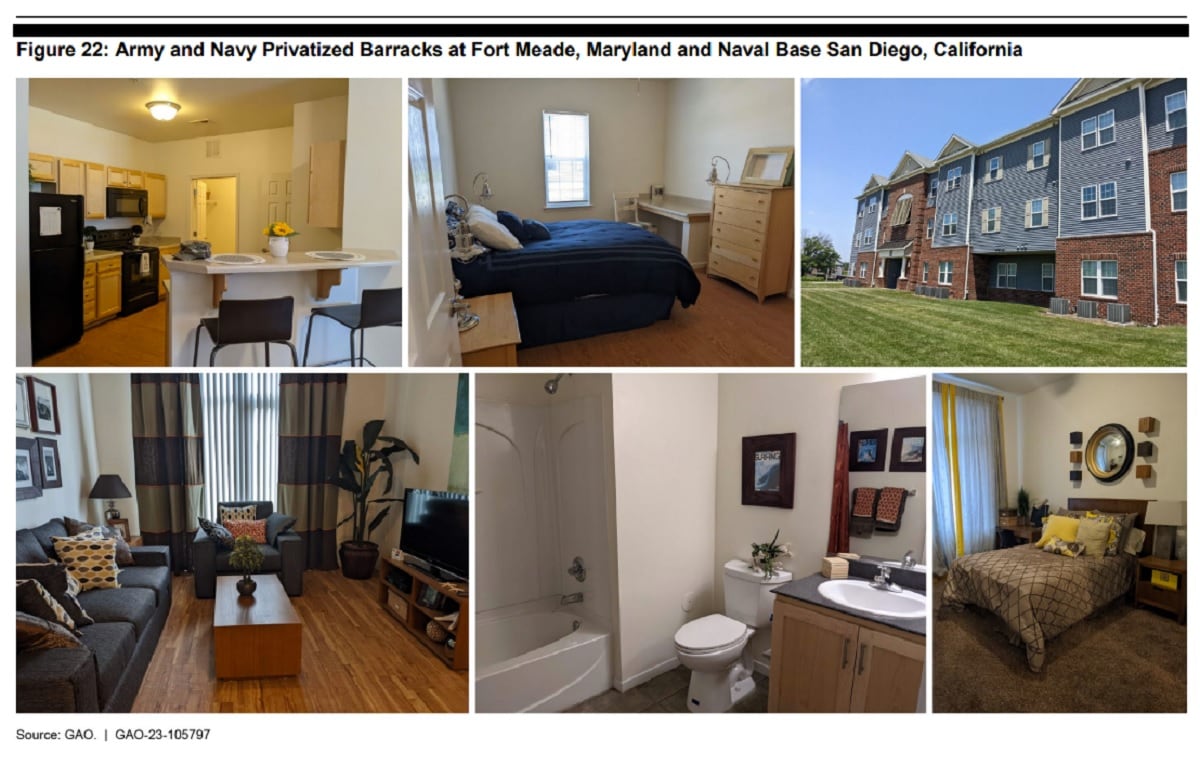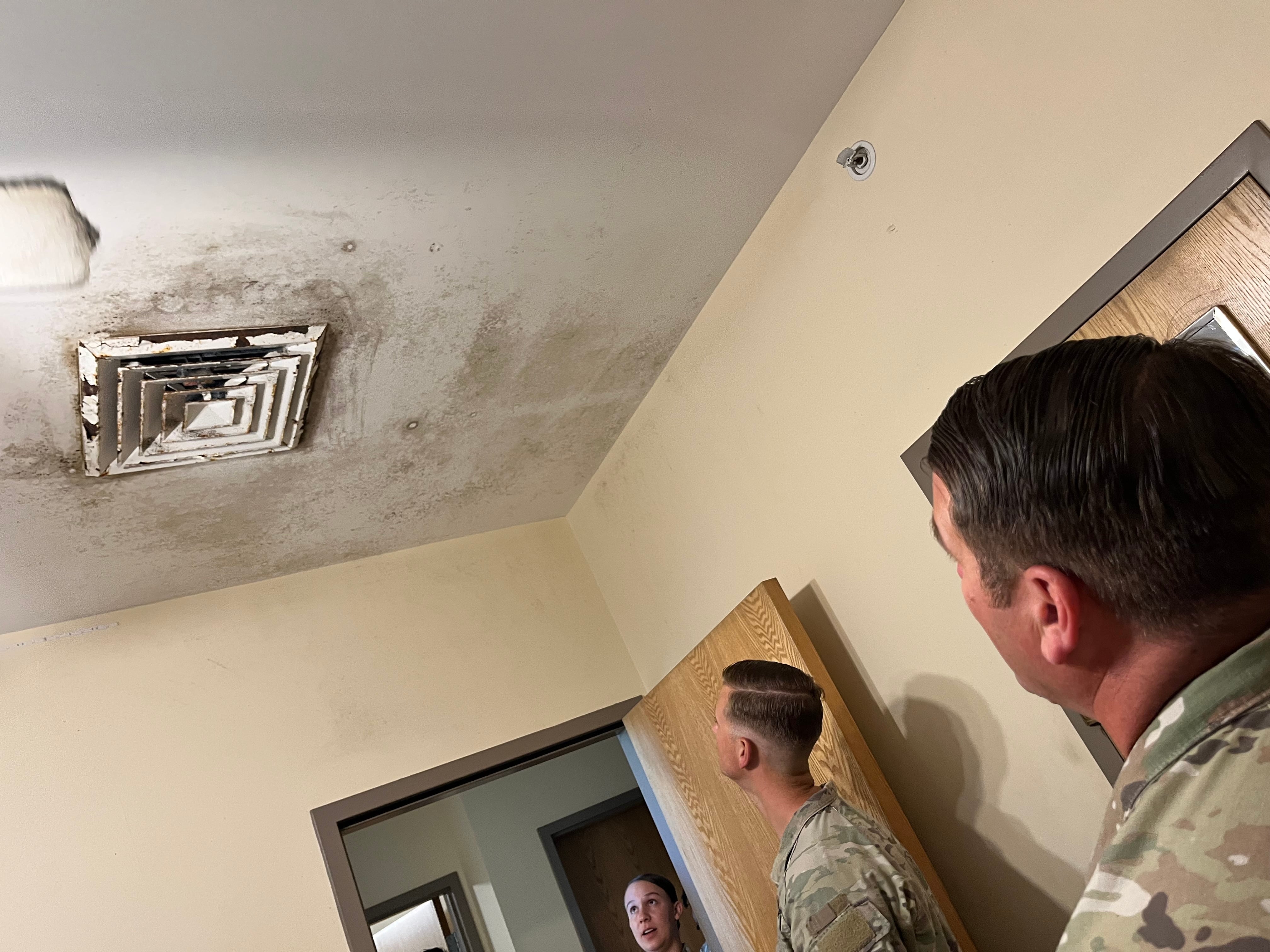The Army knows it has a barracks problem. Now the service has a plan to fix it. But it will take additional funding — $4 billion more, to be specific.
That’s what Paul Farnan, the service’s principal deputy assistant secretary for installations, energy and environment, said in a Thursday interview in the wake of a watchdog report that detailed the dire condition of military barracks conditions. Of the service’s barracks buildings used by permanently stationed junior enlisted soldiers, just over 300 facilities (or one-in-five) are rated as poor or failing.
According to Farnan and internal documents shared with Army Times, the Army has a plan that it believes will fix or replace nearly all of those buildings by fiscal year 2030 — if the money’s there. That funding will depend on whether Army leaders decide the issue is more pressing than other competing requirements and whether Congress agrees.
The Army’s “Permanent Party Barracks Resourcing Strategy” recommends surging more than $4 billion into barracks maintenance, repair and construction over the rest of the decade to ensure all single junior enlisted soldiers live in “quality housing” by 2030. These resources would be in addition to the Army’s previous commitment to spend $1 billion per year on military barracks. The recommendations, developed from a facilities investment statistical model, were signed by former Sergeant Major of the Army Michael Grinston, Army G-9 Lt. Gen. Kevin Vereen, and the service’s top civilian official for installations, Rachel Jacobson.
“We’re showing our work. We’re showing our problems,” Farnan, who reports to Jacobson, said. “We understand that we can’t fix it if we don’t admit the problem — and that’s exactly what we’re doing here.”
Farnan cautioned, though, that the document “was strictly meant to be internal planning to better inform our leaders so they can make decisions to fix the problem.” He said the decision lies with Army Secretary Christine Wormuth, who will determine where the barracks lie in the Army’s priorities ahead of the fiscal 2025 budget process, which will likely begin in February 2024.
Barracks conditions have caught the attention of lawmakers thanks to media and watchdog reports, with some members of Congress pressing Army officials for a price tag to fix the problem all at once.
If implemented in line with the officials’ recommendations, the strategy will fully fund barracks sustainment, which provides for regular maintenance to prevent decay of existing buildings. That will cover things like “preventive maintenance, minor repairs, and the [routine] replacement” of roofs, HVAC units and other similar building components. Currently, sustainment funds are around 92% of the Army’s need, Farnan said. A boost to 100% would cost a projected $342 million, according to the documents.
The strategy also recommends a nearly $2 billion funding boost that will allow the Army to fix all of its repairable barracks that it rates as poor and failing. Under the service’s current budget, the plan is to fix just over a third of those buildings, Farnan’s fellow deputy assistant secretary Carla Coulson told House lawmakers Sept. 27.
The document also proposed constructing new buildings to replace all unrepairable barracks, as well as facilities meant to address housing shortages at some installations — but the move carries an estimated cost of just under $1.8 billion on top of current barracks funding commitments.
Yet even that money won’t cover the entirety of the service’s projected housing shortages, according to the strategy. In order to reduce construction costs, the Army may reevaluate which junior troops are eligible to live off base, with possible considerations being rank, time in service or the size of the installation and local availability of affordable private housing.
Another option that lawmakers broached in the Sept. 27 hearing is exploring privatized barracks for junior enlisted soldiers. A small number of mid-career and senior enlisted troops live in privatized barracks at five installations, Farnan said, and a new facility is under construction in Miami.
RELATED

Farnan said “privatized barracks will not work everywhere” and acknowledged the “obstacles” and “challenges” of using privatized housing, but argued “there are places where they are going to work” even for junior troops.
In addition to calculating funding requirements, the strategy sets a new bar for single-soldier “quality housing” across the Army. All of the service’s new or reconstructed barracks will meet the standard, according to the documents.
The strategy’s new standard calls for functional safety features, locking exterior and interior doors, private sleeping rooms for all soldiers, a bathroom for every two soldiers, and shared kitchenettes that include a cooktop and microwave. Quality housing must also be adequately furnished, “internet ready,” and have access to laundry.
Farnan said junior soldiers “all deserve to live in decent, quality housing,” but cautioned that the improvements will take time even if fully funded.
“This is a problem that was created over the course of decades,” Farnan said. “We’re not going to fix it in just one year…we hear [the soldiers], we’re aware of the concerns.”
Davis Winkie covers the Army for Military Times. He studied history at Vanderbilt and UNC-Chapel Hill, and served five years in the Army Guard. His investigations earned the Society of Professional Journalists' 2023 Sunshine Award and consecutive Military Reporters and Editors honors, among others. Davis was also a 2022 Livingston Awards finalist.





